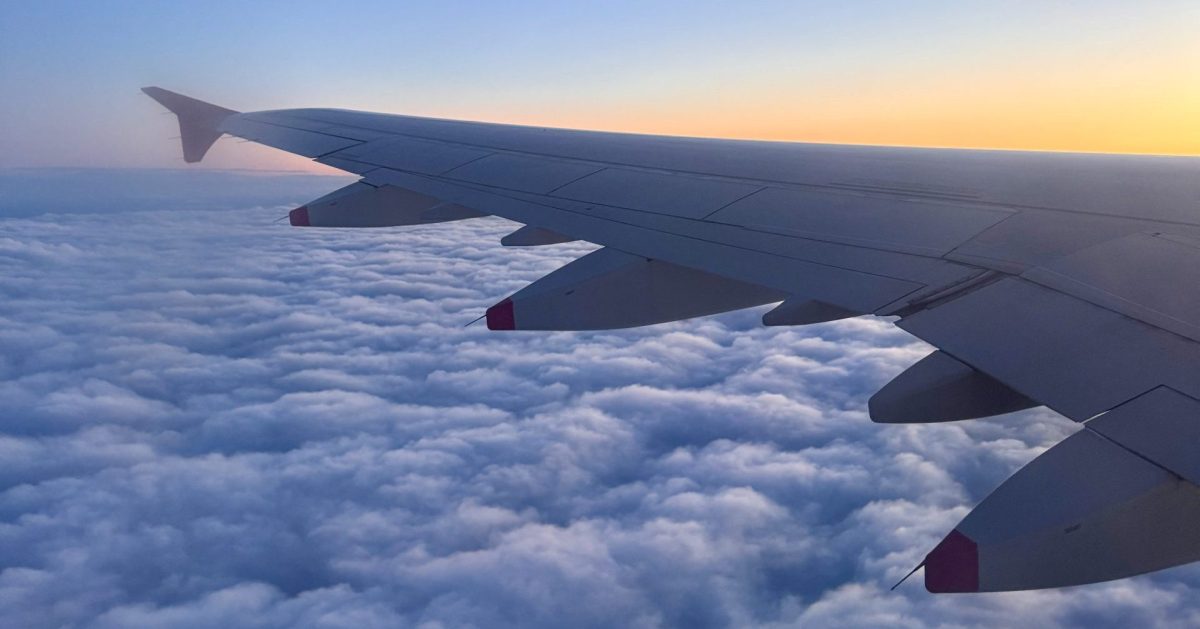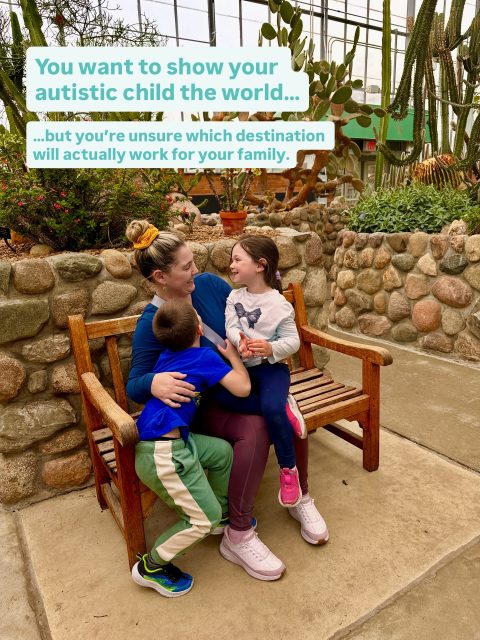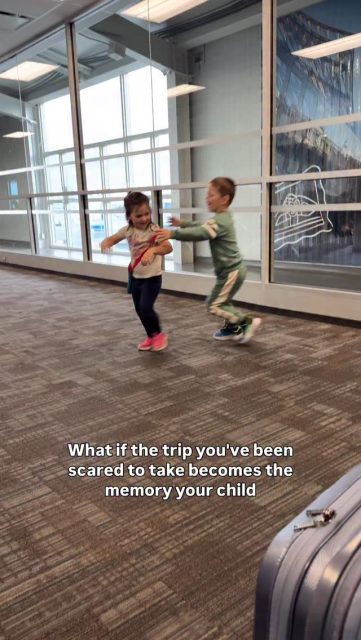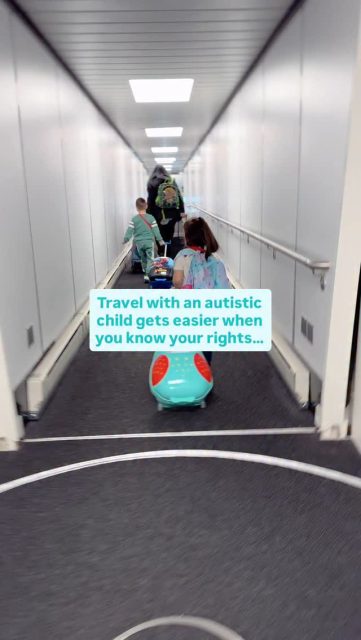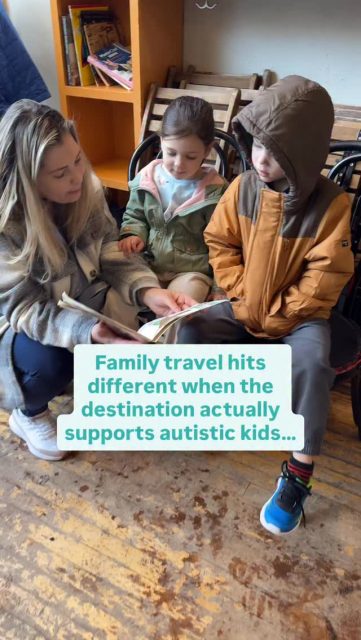If you’re wondering whether flying with an autistic child is even possible, this post is for you.
I’ve taken more than 38 flights with my autistic son before he turned five, but I still remember our very first flight like it was yesterday. At the time, he wasn’t formally diagnosed—but I already suspected autism. That first flight brought an overwhelming mix of anxiety and questions. What if he had a meltdown mid-flight? Would strangers stare? What if this ended up being more chaotic than enjoyable?
Now, years later, I want to share everything I’ve learned through experience so your journey flying with an autistic child can feel a little lighter, a little less lonely, and a whole lot more possible. Because I promise you, family travel is worth it.
Preparing to Fly with an Autistic Child: Start the Journey at Home
One of the biggest game-changers for us was preparing before we got to the airport. Autistic children often thrive with structure and predictability, so giving them a visual roadmap of what to expect is key.
We use visual schedules to walk through each step of the travel day. I show my kids videos of airplanes, takeoff, and even airport security. We talk about the sounds they might hear and remind them of the comfort items they get to pack and bring along.
I also set up play spots at home where we pretend to go through security. They present a “boarding pass” (a piece of construction paper) to the flight staff (aka mom) and find their seats on the couch. It might seem simple, but it helps ease uncertainty in a fun and familiar way.
We practice using noise-canceling headphones and introduce fidget toys so they feel familiar in advance. We also read social stories about travel days and flying.
If you’d like a visual example, check out this reel I made with my kids at the airport. It walks through going to the front desk, getting their boarding passes, and heading to security. Your little one might find comfort in seeing other kids happy and confident in an airport setting.
Small steps build big confidence.
Choose the Flight Time That Works for Your Child
When booking your flight, trust your instincts. Some families do best with early morning departures, while others prefer a slower start. For us, flights around 8:00 a.m. tend to work well—our kids are well-rested, and the airport is usually less busy.
If possible, book direct flights. Layovers and gate changes can add unnecessary stress. Try to avoid flight times that interfere with your child’s regular sleep schedule. Tired kids and travel challenges don’t mix well.
Pack a Sensory Toolkit That Works for Your Child
Your carry-on is your survival kit. I always pack noise-canceling headphones, his prized lovey (comfort item), fidget toys, a blanket, and—most importantly—an iPad and cordless headphones with downloaded shows, digital puzzles, and craft games.
Food is another big one. I bring familiar snacks and backup options in case the airline meals or snacks don’t work out. Don’t forget wet wipes, extra clothes, and a change of underwear for everyone—accidents and spills happen.
Some of our favorite sensory travel items when flying with an autistic child include:
- Noise-canceling headphones (we love the foldable kind for easy packing)
- SlumberPod for better sleep once we arrive at our destination (use code: SERENITY)
- Textured stress balls
- Tablets with pre-downloaded shows and games
If you’re just getting started, build your toolkit one item at a time. Every child has different needs, so test things in advance when you can.
Boarding Tips When Flying With an Autistic Child
I always let the gate agent know we’re traveling with a child who has sensory needs. Many airlines allow pre-boarding or can assign seats in quieter sections of the plane.
I bring sanitizing wipes to clean tray tables and surrounding areas, not just for hygiene, but because sticky textures or unexpected messes can be triggering.
Some airports also participate in the Sunflower Program or offer accessibility lanyards. These small accommodations can make a huge difference in reducing stress for both you and your child.
Prepare for the Possibility of a Meltdown Mid-Flight
Please know: if your child has a meltdown on the plane, it doesn’t make you a bad parent. It doesn’t mean you shouldn’t have traveled. It simply means your child is doing their best in a difficult environment.
We haven’t used this next suggestion ourselves, but I want to include it in case it gives another parent confidence to travel. You can pack small cards that say something like:
“Our child is autistic. He may need support regulating in unfamiliar environments. Thank you for your patience.”
Having something like this on hand may help ease your anxiety or reduce judgment from others if needed.
If a meltdown does happen, stay calm. Breathe. Remind yourself that most people are more understanding than you expect. And if someone isn’t? That’s their discomfort, not yours to carry.
This Is Why We Keep Flying
Despite the bumps, the unknowns, and the learning curve…we keep choosing travel. Why? Because I can’t imagine giving up my biggest passion, and because we’ve seen what it unlocks for our kids.
Travel gives our son confidence. It builds resilience. It teaches flexibility in a world that doesn’t always bend for neurodivergent children.
Most of all, travel gives us connection. Away from daily routines, we get uninterrupted family time, new experiences, shared memories, and that carefree energy that only exists on vacation. These are the stories we’ll tell for years.
Not every flight goes smoothly but every trip has been worth it.
You Can Do This
If you’re reading this and wondering whether you should book that flight, let me say this clearly: your family deserves to explore the world too.
Start small if you need to. Test and adjust as you go. You’ll find your rhythm.
And when it feels hard, remember you’re not alone!
Let’s Keep the Conversation Going
Have questions about flying with your autistic child? DM me on Instagram @dreamjartravels. I’m always happy to connect and do my best to help. If you’re new to traveling with an autistic child, you might also enjoy this post where I share how we got started.
Remember, the journey is always worth the destination. ✈️
With gratitude,
Kayla Squier
@dreamjartravels – Inspiring you to turn your travel dreams into reality
This post may contain affiliate links, which means I may earn a small commission if you make a purchase—at no extra cost to you. I only share products I genuinely love and use.
